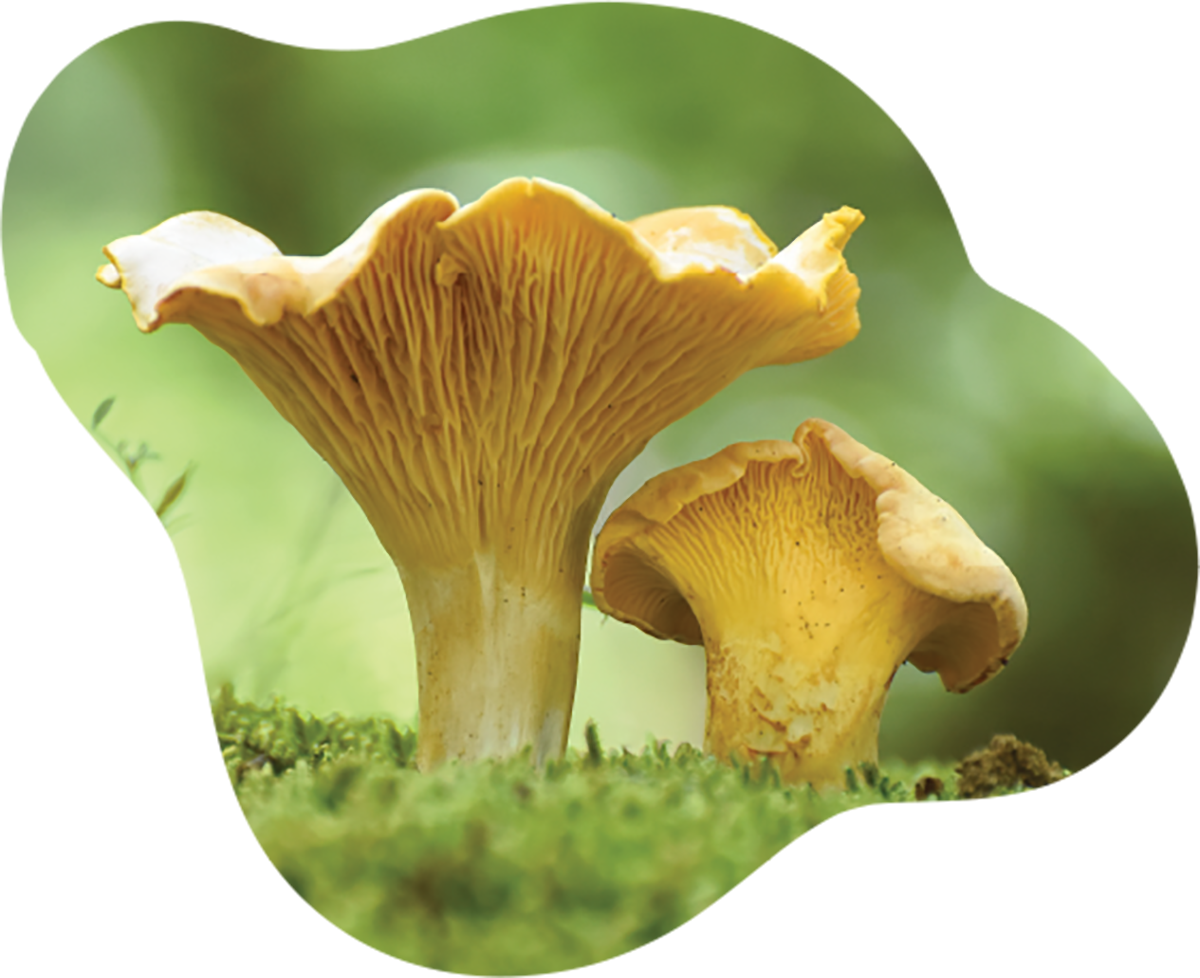


Chanterelles
(Cantharellus)
Chanterelles require established woodland to grow, which means it's highly unlikely they'll be cultivated anytime soon. Chanterelles develop interdependent relationships with trees, called "mycorrhizal relationships". It can take many years to establish this relationship, so chanterelles are typically found in old-growth forests. Therefore, a forest that has been cut recently will not have chanterelles. Keep your eyes out for older trees with a thick canopy. Chanterelles are most commonly found near maple, beech, poplar and birch trees. In the Northwest, they're associated with oak, pine and fir trees. Chanterelles need moist habitat, and tend to thrive after a wet summer with lots of rain.
Chanterelles have forked ridges on their underside, and the forking of their false gills is a characteristic of a true chanterelle. Unlike most mushrooms, they do not have true gills and they have more of a blunt edge. Instead of a hard break where the gills meet the stem, the ridges of a chanterelle run down the stem.
